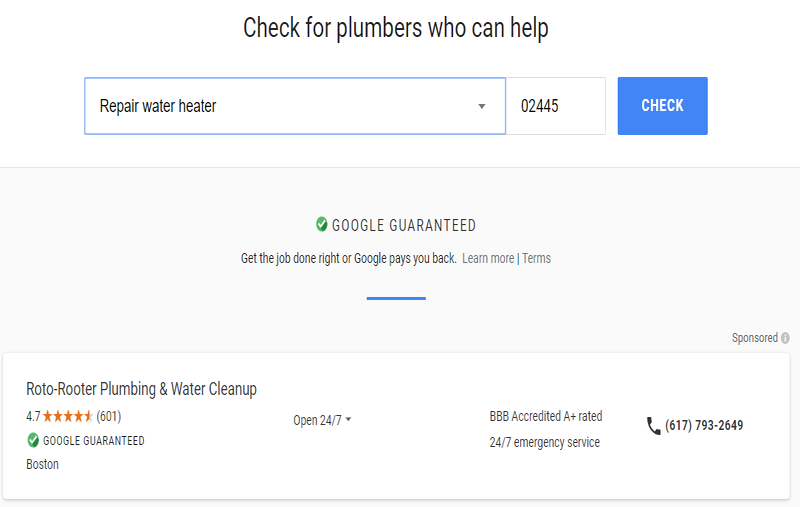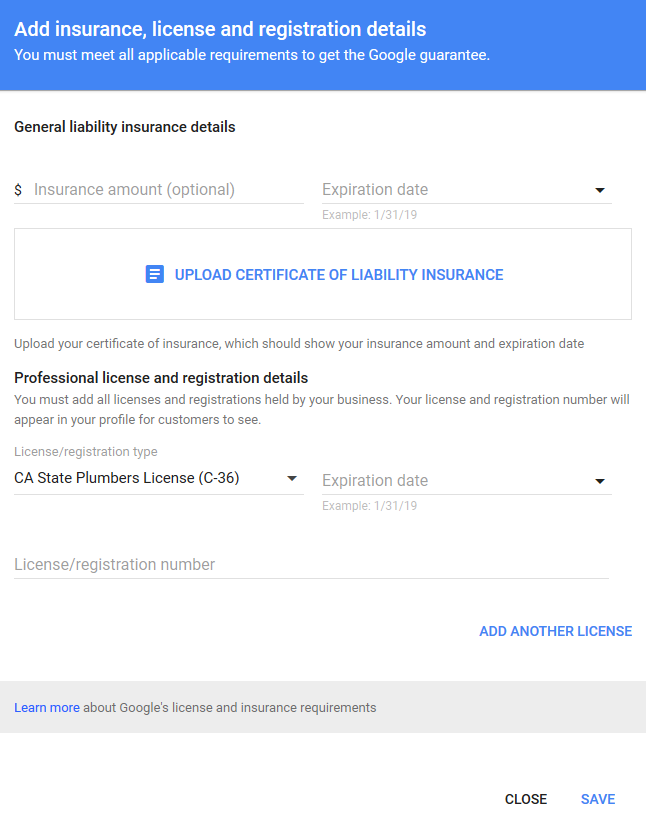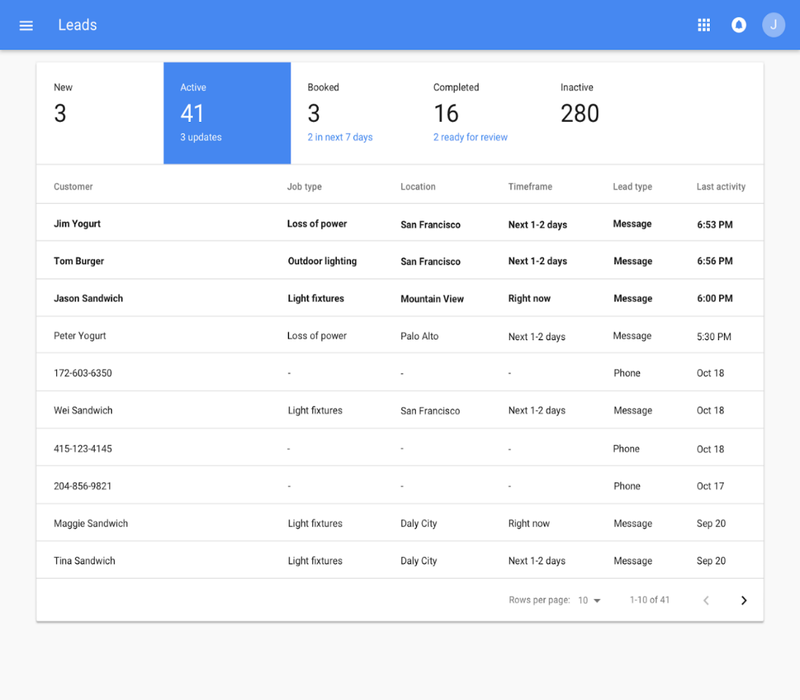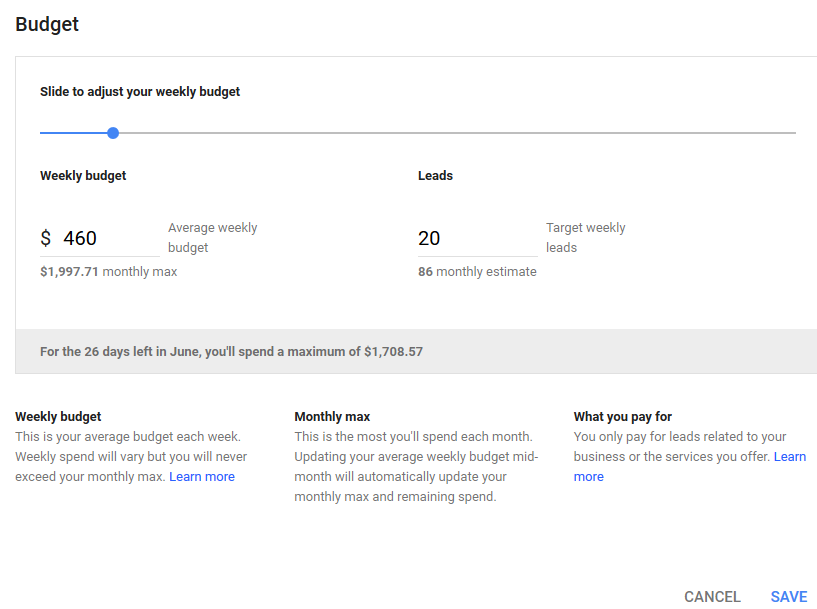PPC
The Ultimate Guide to Google’s Local Service Ads
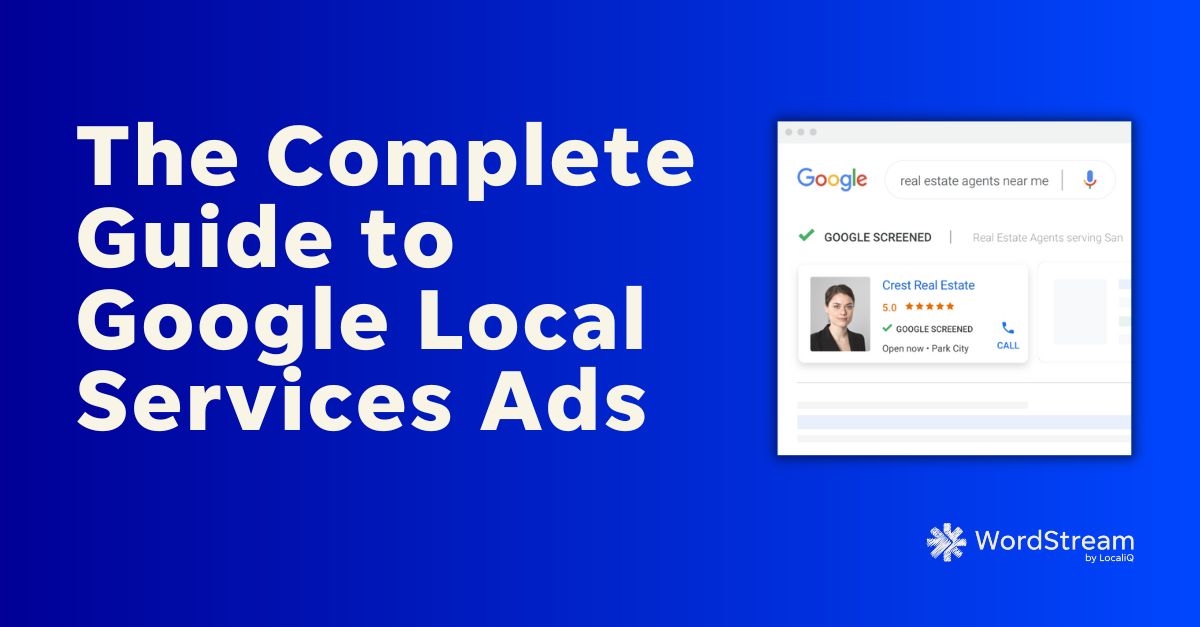
Google’s reach may extend across the world but, for some local searches, we need a trusted solution in our own neighborhood (and quickly)!
Searchers watching their sinks overflow can’t wait for a plumber from across state lines, and they’re hesitant to call a stranger to help them get into their car when they’re locked outside in the middle of the night.
Local service advertisers often struggle to convert these searchers with just text ads.
Luckily, Google’s Local Services Ads (LSAs) can come to the rescue. In this article, we’re covering everything you need to know about LSAs to make the most of them for your business.
Table of contents
What are Google Local Services Ads?
Google Local Services Ads are a great supplement to the local SEO strategy for specific industries such as locksmiths, plumbers, garage door professionals, electricians, lawyers, real estate agents, and many more.
When a searcher enters a local search query (such as the one below), they may see several trusted professionals in their area positioned right above the traditional paid search ads; these ads show a business number, hours, ratings, and reviews.
Upon clicking on a local advertiser’s listing, Google prompts them to confirm the job they’re looking for as well as their service area. If you fit the job and serve that area, you’ll be matched to the searcher and they’ll be able to review your qualifications, ratings, and Google reviews before calling you.
If you’re not a good fit for their job or you don’t serve their region, then Google will save you the costs and burdens and will connect them to a more appropriate Local Services Ad.
Google’s Local Services Ads display on desktop, tablet, and mobile searches, as shown above; they also have reach beyond traditional search ads.
Local Services Ads are featured in the Google Assistant’s response to relevant voice search queries! The Google Assistant inquires about the searcher’s job type and location to ensure a quality match for the advertiser.
Local Services Ads industries
Local Service Ads are a dream come true for some industries. Today, Google fully supports Local Services Ads all across the United States for more than 70 industries, including:
- Appliance repair
- Carpenter
- Carpet cleaning
- Cleaning service
- Electrician
- Foundation pro
- Garage door pro
- Home inspector
- Home security
- HVAC
- Landscaper
- Mover
- Pest control
- Plumber
- Pool cleaning
- Tree service
- Window repair
- Financial planner
- Tax specialist
- Real estate agent
- Bankruptcy lawyer
- Business lawyer
- Estate lawyer
- Beauty school
- Dance instructor
- Driving instructor
- First aid training
- Massage school
- Preschool
- Tutoring
- Child care
- Funeral home
- Animal shelter
- Pet adoption, boarding, grooming, and training
- Veterinarian
- Dental
- Acupuncturist
- Personal trainer
- Yoga studio
- Weight loss center
Benefits of Google Local Services Ads
Still wondering if Google Local Services Ads are right for your business? Let’s review some of the benefits of this specific ad type.
Advertisers pay per lead–not click!
PPC advertisers know the pain of paying for a click that isn’t a good fit or doesn’t convert—especially for businesses with high average costs per click, like attorneys and dentists.
Google’s Local Services Ads help connect the right job to the right advertiser and prevent the job mismatch that often happens when a user searches for broad terms for a very specific job or for an area outside your service zone.
Businesses running Local Service Ads are only charged for valid leads, and depending on the job and the market, these end up costing only $6-30 per lead. If you receive a lead that is either fraudulent, spam, or a poor match, you can even dispute the charge for credit.
Gain trust with the Google Guarantee or Google Screened badge
Searchers will notice that Local Services Ads appear with the green checkmark alongside the “Google Guarantee.”
Beyond just catching users’ attention on a busy SERP, this allows businesses to benefit from Google’s powerful endorsement. See, users trust Google, and its recommendation is backed by more than reputation; the Google Guarantee protects unsatisfied customers for jobs booked through Local Service Ads with a lifetime cap for coverage of $2,000.
Similarly, businesses in the care, learning, or wellness industries can be eligible for a “Google Screened” badge. This tells your LSA viewers that your business is fully licensed and vetted by Google.
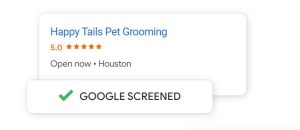
Expand the reach of your paid search ads
You’ll notice that Google Local Services Ads sit above the paid search ads and the organic listings.
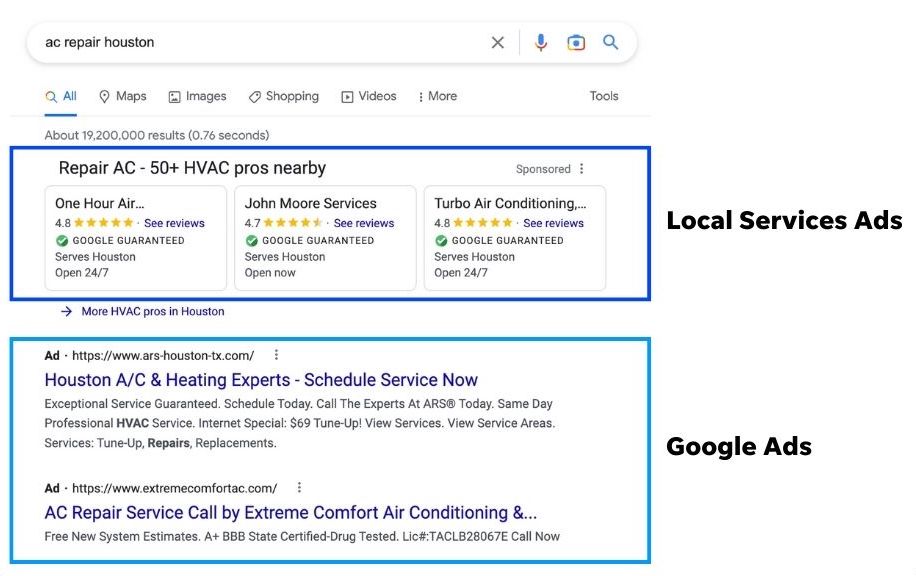
That’s because Google Local Services Ads aren’t meant to replace your traditional search ads or even your organic local listings.
Some searchers still turn to Google and expect to visit your website before deciding if you’re the best provider for their business. Even if they don’t convert via LSAs, their prime position on the SERP and user reviews may change how people convert later on.
Be included in voice search responses
Your customers are less likely to open a new tab and type a search query when they’re wrist-deep in their clogged drains! With over 20% of all searches coming from voice search, Local Services Ads are one of the few ways you can make sure that you’re found on the 400 million devices powered by Google Assistant.
No ads or keywords to manage
Paid search advertisers know that keyword research and ad testing can be neverending tasks. Luckily, Google’s Local Service Ads require neither! Local Services Ads will automatically trigger when a customer searches for one of the thousands of relevant search terms, be it as broad as “Plumber” or as specific as “leaky faucet under sink.” The ad format will automatically be created using information from your business profile.
Getting started with Google Local Services Ads
Ready to try out Google LSAs? Here’s how to get started.
1. Confirm your eligibility
Google’s Local Services Ads are only available for certain industries (which we outlined earlier). To find out if you can connect with your customers through Local Services Ads, first confirm your business type and location here.
If you’re eligible, you’ll be guided through creating an account to manage your Local Services Ads. Local Services Ads are managed separately from the ads you create in Google Ads, so you’ll need to create a new account.
2. Create your business profile
Your Google Local Service Ads profile is different from your Google Business Profile account, which is connected to your local listing on Google (and if you haven’t already, make a note to create and optimize this account as well). Your Local Services Ads business profile will determine which jobs are matched to your business. Be honest about what kind of services you can perform as well as which areas you want leads in, as you’re agreeing to potentially pay for any match leads from your Local Services Ads.
From your business profile, you can edit:
- Your weekly budget
- Your business hours
- Your service areas
- Your job types
You also have the option to add highlights to your business profile, which will potentially serve alongside your Local Services Ads on the SERP and on your business details page. Use these to highlight attributes (“Locally owned & operated”) and special offers (“Military discount available”) to distinguish yourself from others in your industry. Although these highlights are optional, Google recommends including 2-5 highlights in your business profile.
3. Add your license and insurance details
To earn the Google Guarantee or Google Screened designation and run Local Services Ads, you’ll need to submit proof that you’re a licensed and insured professional. Be sure your paperwork is up to date and then provide your general liability insurance details as well as your related professional licenses.
If your city or state requires additional licenses, you can add them here as well to ensure you’re compliant in those regions.
4. Complete a background check
Before Google starts sending people into its users’ homes, offices, and cars, it wants to be sure its users are safe and can always trust the Local Services Advertisers covered under the Google Guarantee. For this reason, Google requires businesses and their fieldworkers to pass a background check. Google has partnered with two background-checking vendors, Pinkerton and Evident, to perform these background checks.
There is no cost for these background checks, and you can manage them here.
5. Manage your leads
Once your business profile is complete, you can launch your Local Services Ads and start collecting new leads. You can view and manage your incoming leads in your LSAs dashboard.
From this dashboard, you can navigate to the “Leads” tab via the drop-down in the top right corner. Alternatively, you can always manage your inbound leads via the Local Services Ads app on Android and iOS.
Remember that leads aren’t necessarily booked jobs! Be sure to follow up with your inbound leads. After selecting an individual lead, you can review the details of the lead, including the job type and location, as well as listen to the recording of the call.
After reviewing these leads, you have these three options to follow up with an interested lead:
- Reply to the customer by sending your message as an email or text message to the customer.
- Call the customer based on the phone number they listed.
- Decline the job request. If you decline the request, it will be removed and the customer will be notified. You can send a response with more information about why the request was declined. Once declined, requests can be recovered if something changes.
After reviewing your leads, you can also mark a lead as booked to track your upcoming jobs. Use this feature to schedule your upcoming jobs, send confirmation emails, and gather customer reviews. Reporting on these booked deals will also help you determine your Local Services Ads’ overall ROI and profitability.
6. Manage your LSA budget
From your business profile, you can adjust your Local Services Ads budget. You can manage how much you’d like to spend on your Local Services Ads by raising or lowering your average weekly budget. Like in Google Ads, Google may spend slightly less or more than your assigned weekly budget in any given week, but it will never exceed your monthly maximum budget.
Given that you’re charged per lead—rather than click—with Google Local Services Ads, increasing or decreasing your budget will directly impact the number of leads you generate. If you’re just starting off with Local Services Ads, it’s recommended that you budget for at least 20 leads per week to get the most out of your new ads.
Keep in mind that your Local Services Ads budget is separate from your Google Ads budget, so if you’re running both, you’ll want to ensure you’re prepared for the combined costs of your campaigns.
To make the most of your budget, check out these seven tips to improve your Local Services Ads ROI.
7. Consider your LSA rankings
Even with Local Services Ads, there’s still a limited amount of space on the SERP!
Up to three Local Services Ads will appear on Desktop, two on Mobile, and only one via Google Assistant. Just like with your PPC campaigns, to ensure your listing shows you’ll need to have a high Ad Rank.
However, unlike your search ads where you have to worry about your ad’s Quality Score–formulated by a combination of your ad’s CTR, ad relevance, and landing page–you don’t have to worry about those ranking factors. Instead, Google calculates your Local Services Ads’ Ad Rank by considering factors including:
- Your review score and the number of reviews you receive
- Your responsiveness to customer inquiries and requests
- Your business hours
- Whether or not Google’s received serious or repeated complaints about your business
Use Google LSAs today to book more jobs tomorrow
Google LSAs are quick and easy to create and manage, so incorporating this ad type into your marketing strategy is a win-win for your service business. Just be sure to carve out time to properly set them up and manage any leads your LSAs bring in. If you still feel stuck while navigating Google LSAs, see how our solutions can help your service-based business make the most of this unique ad type.
To recap, here are the steps to get started with Google LSAs:
- Confirm your eligibility
- Create your business profile
- Add your license and insurance details
- Complete a background check
- Manage your leads
- Manage your budget
- Consider your ad ranking

